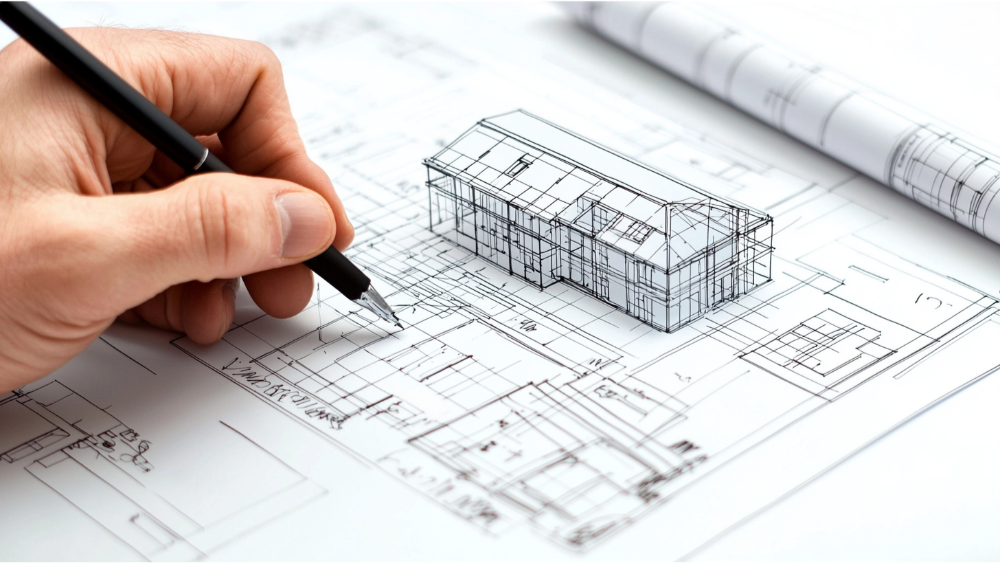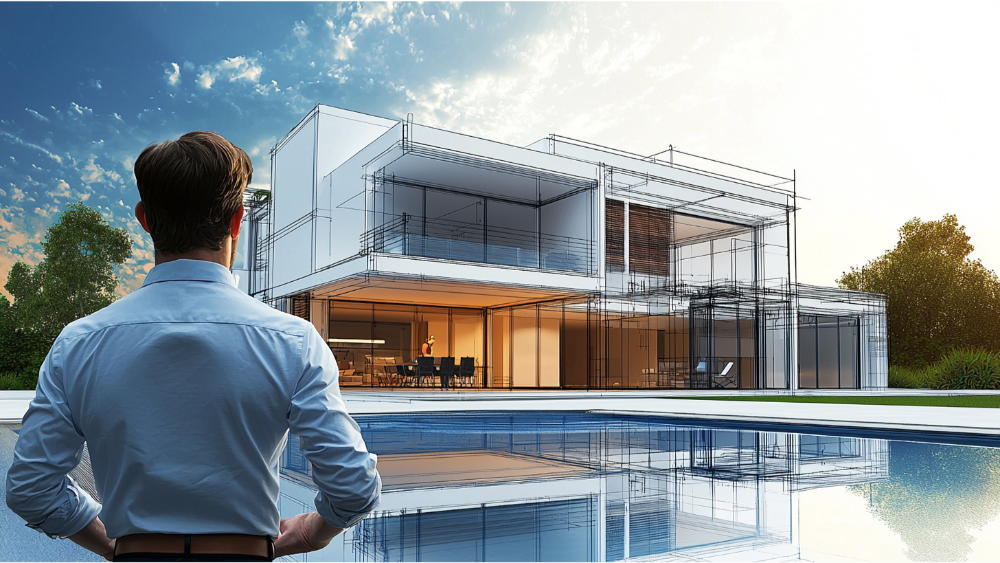#1 ADU Builders
Contact Golden State
Drop us a line! We look forward to discussing your next project with you!
Cut the chase! Schedule a face-to-face virtual meeting with us today to dive into your project's next steps.
For our returning clients, experience our streamlined, contact-free project proposal process. Simply fill out our short project questionnaire, and we'll deliver your project proposal within 72 hours.
Contact Us:
Follow Us:

- Golden State Design & Engineering
- Comment 0
What is Architectural Design?
Architectural design is the process of creating a blueprint or plan for a building or structure. It involves choosing the right materials, layout, and overall aesthetics to create a functional and visually appealing space. This process requires careful consideration of both functional and aesthetic elements to ensure that the final product meets the needs of its users.
Key Factors in Architectural Design
There are several key factors that play a crucial role in architectural design:
Functionality
The functionality of a building is one of the most important considerations in architectural design. The space must be designed to meet the specific needs and requirements of its intended use. For example, a hospital will have very different functional requirements compared to an office building or a residential home.
Aesthetics
While functionality is crucial, the aesthetic appeal of a building also plays a significant role. Architecture is often considered a form of art, and the design of a building should reflect this. The use of materials, colors, and textures can greatly impact the overall look and feel of a space.
Sustainability
In recent years, sustainability has become an increasingly important factor in architectural design. This involves designing buildings that are energy-efficient and environmentally friendly. Architects must consider factors such as natural lighting, insulation, and renewable energy sources when creating their designs.
Safety and Accessibility
The safety and accessibility of a building are also key considerations in architectural design. Buildings must adhere to safety measures and regulations, as well as be easily accessible for all individuals, including those with disabilities.
Design Under Licensure
The Architectural Registration Exam (ARE) is a critical component for architects seeking licensure in the United States. Administered by the National Council of Architectural Registration Boards (NCARB), the ARE test measures critical elements designed to assess a candidate’s proficiency and knowledge in the essential application areas of architectural practice, as well as permit them to design under license.
This rigorous and comprehensive exam is divided into multiple sections, covering topics such as project management, practice management, programming and analysis, project planning and design, project development and documentation, and construction and evaluation.
The Architectural Design Process

The architectural design process typically involves several stages:
- Initial Consultation: This is where the architect meets with the client to discuss their needs and requirements for the building.
- Site Analysis: The architect conducts a thorough analysis of the site where the building will be constructed, taking into account factors such as topography, climate, and surrounding buildings.
- Conceptual Design: Based on the initial consultation and site analysis, the architect creates a conceptual design for the building.
- Design Development: In this stage, the architect refines the conceptual design and works out details such as materials, layout, and building systems.
- Construction Documents: These are the detailed plans and specifications that guide the construction of the building.
- Bidding and Negotiation: The architect helps the client select a contractor to build the project and negotiates a contract between them.
- Construction Administration: The architect oversees the construction process to ensure that it adheres to the design plans and specifications.
Architectural Design With Golden State Design & Engineering

At Golden State Design & Engineering, we take pride in being the leading architectural design firm in Northern California, known for our innovative and client-centered approach. Our team of experienced architects and engineers is committed to pushing the boundaries of creativity while maintaining functionality and sustainability. We believe that each project is a unique opportunity to blend state-of-the-art design with practical solutions tailored to fit the specific needs and desires of our clients. This commitment to excellence ensures that every structure we create is not only aesthetically stunning but also highly functional and environmentally conscious.
Our dedication to sustainable architecture sets us apart in the industry. At Golden State Design & Engineering, we integrate cutting-edge technology and environmentally friendly practices into all of our projects. From utilizing renewable energy sources to incorporating natural lighting and efficient insulation systems, we prioritize creating spaces that minimize environmental impact and reduce energy consumption.
We want to help you!
Our talented team continuously explores new methods and materials to further enhance the sustainability of our designs, ensuring that we remain at the forefront of eco-friendly architecture.
We understand that communication is the key to a successful project, and we strive to build strong partnerships with our clients throughout the architectural design process. Our firm emphasizes transparency and collaboration, inviting clients to be actively involved at every stage. From the initial consultation to the final construction administration, we work closely with you to bring your vision to life.
If you are looking to embark on a new architectural project, we invite you to experience the Golden State difference. Contact us today to schedule a consultation and discover how our expertise can turn your architectural dreams into reality!
Frequently Asked What is Architectural Design Questions

What is the role of an architect in the design process?
An architect plays a pivotal role in the design process, acting as both a visionary and a technical expert. Their primary responsibility is to conceptualize and create building designs that are both functional and aesthetically pleasing. Architects conduct a detailed analysis of the client’s needs and the site itself to develop a comprehensive plan that integrates aspects such as space utilization, building systems, and environmental considerations.
They also ensure that the design adheres to relevant building codes and regulations. Throughout the construction process, architects work closely with engineers, contractors, and other professionals to oversee the project, addressing any challenges that arise and ensuring that the final outcome aligns with the original vision and client expectations.
How does sustainability influence modern architectural design?
Sustainability has become a fundamental aspect of modern architectural design, driven by the growing awareness of environmental issues and the need to reduce carbon footprints. Architects incorporate sustainable practices by utilizing eco-friendly materials, integrating renewable energy sources such as solar panels, and designing buildings that maximize natural light and ventilation to reduce energy consumption. They also focus on creating structures that can adapt to future changes, promoting longevity and resource efficiency.
In urban planning, considerations like green spaces, water conservation, and waste management are essential components of a sustainable design. Architects must balance these environmental efforts with functional goals, ensuring that sustainable buildings provide comfort and usability without compromising on aesthetic qualities.
What are the challenges faced by architects in urban areas?
Architects operating in urban areas face several challenges, stemming from the complex and dynamic nature of cities. High population density often leads to limited space, requiring architects to develop innovative solutions for maximizing available area. Balancing aesthetic desires with functional needs is crucial, particularly when dealing with existing infrastructure and varying regulations.
Large cities also demand attention to sustainability, as reducing environmental impact in densely populated areas presents unique difficulties. Furthermore, maintaining cultural and historical integrity is vital, as new constructions must sensitively integrate with a city’s architectural heritage. These challenges require architects to possess excellent problem-solving skills, creativity, and adaptability to design structures that are both practical and visually engaging in an ever-evolving urban landscape.
How does architectural design impact community well-being?
Architectural design significantly influences community well-being by shaping the environment in which people live, work, and interact. Thoughtful design can enhance quality of life by fostering a sense of place and belonging, encouraging social interactions through communal spaces, and providing ease of access to amenities and services. Architects can contribute to community health by incorporating features like walkability, green spaces, natural lighting, and sustainable buildings that improve air quality and reduce stress.
Additionally, designing spaces that are inclusive and accessible promotes equality and ensures that everyone, regardless of physical ability, can participate in community life. Ultimately, successful architectural design creates environments that support the social, emotional, and physical needs of individuals, contributing to a vibrant and harmonious community.
What technological advancements are influencing architectural design today?
Technological advancements and software engineering are continuously reshaping architectural design, offering new possibilities and efficiencies to the creative process. Building Information Modeling (BIM) enables architects to create detailed 3D digital representations of structures, facilitating better-layered architecture and reducing errors during construction. The integration of virtual reality (VR) and augmented reality (AR) allows architectural designers and clients to visualize and explore buildings before they are built, enhancing understanding and decision-making.
Innovations in construction materials, like 3D-printed components and smart materials that adjust to environmental conditions, provide new opportunities for sustainable and resilient design. Additionally, data-driven design strategies, leveraging big data and artificial intelligence, assist architects in optimizing building performance and predicting future trends. These advancements are revolutionizing how architects conceptualize, design, and execute projects.
How does an architectural designer balance functionality and aesthetics in their designs?
Architects balance functionality and aesthetics by carefully considering how space will be used while also focusing on the visual impact of the architectural style. Functionality requires a deep understanding of the building’s intended purpose and the needs of its users, ensuring efficient layouts, accessibility, and safety. Architects must integrate these aspects with the design aspects such as form, color, and material choices, aligning the design with both the client’s vision and the architectural context.
This balance is achieved through iterative design processes that involve sketching, modeling, and revising ideas until an optimal solution is found. Architects also draw inspiration from various architectural styles, cultural influences, and natural elements to craft designs that are not only operationally sound but also visually appealing, providing a harmonious and inspiring environment.
Conclusion

At Golden State Design & Engineering, we are committed to leading the charge in innovative, sustainable, and responsible architectural design. We understand the profound impact well-designed spaces can have on communities and individuals alike. If you are ready to embark on a journey to transform your vision into reality, we invite you to collaborate with us. Together, we can craft environments that not only meet your needs but also inspire and endure for generations to come. Contact us today to discuss how we can help bring your architectural aspirations to life—let’s build a better future together!
#NAICS’s:
- 541310 Architectural Services &
- 541330 Engineering Services
DUNS NO:
- 119132267
#SIC’s
- 8712 Architectural Services &
- 8711 Engineering Services
Cage #
- 9R4L5
#UNSPSC’s:
- 81101500, 81101502, 81101505, 81101508, 81101526, 81101533, 81101522

